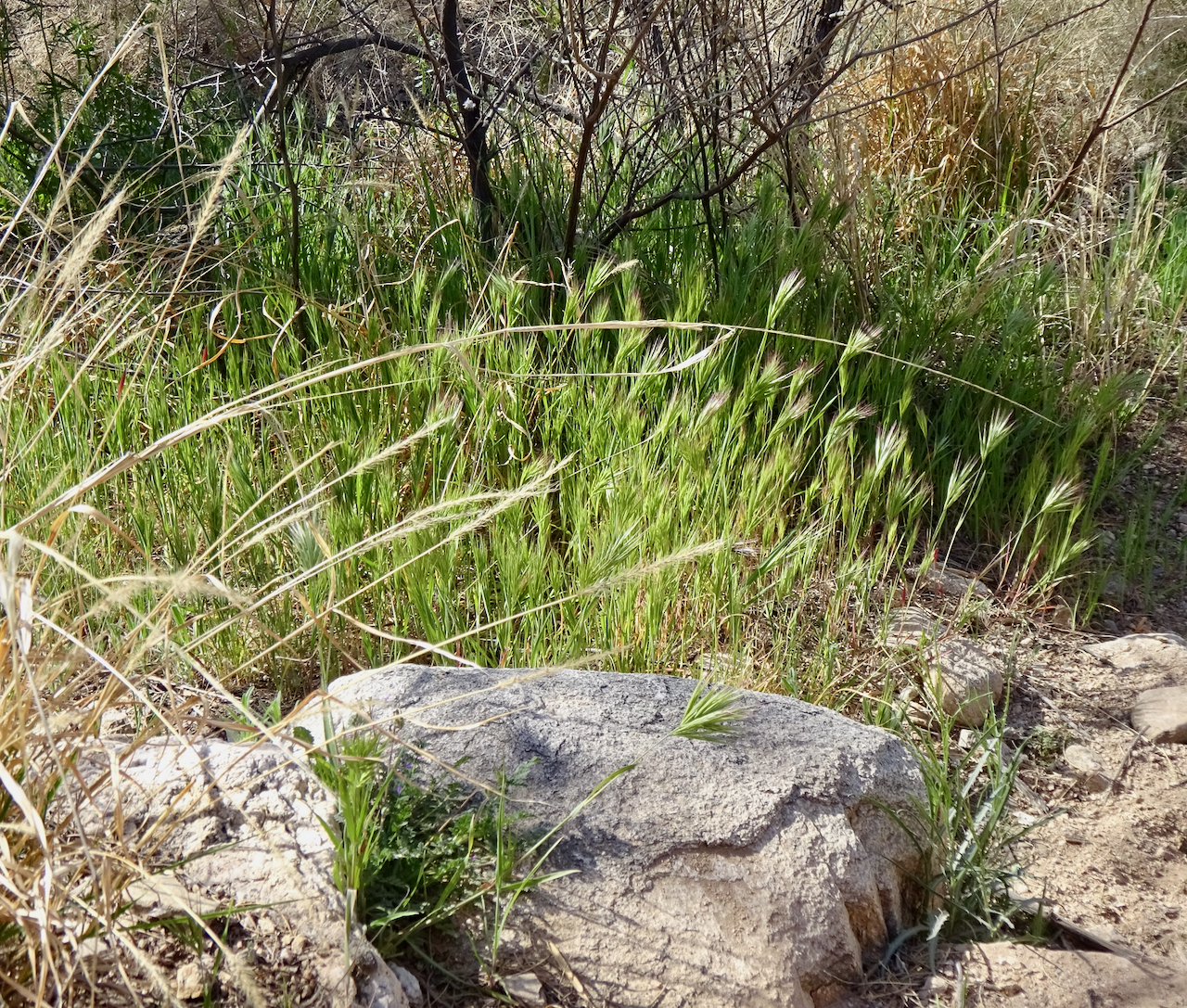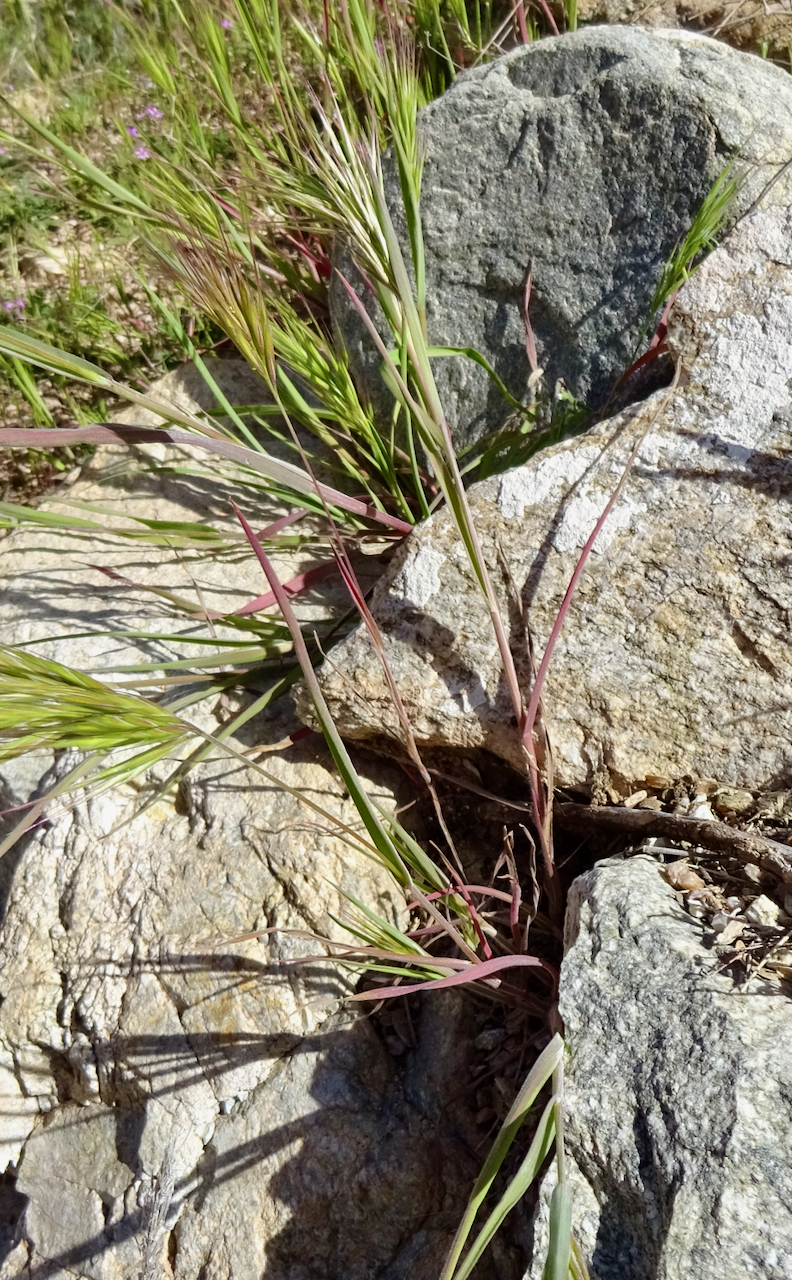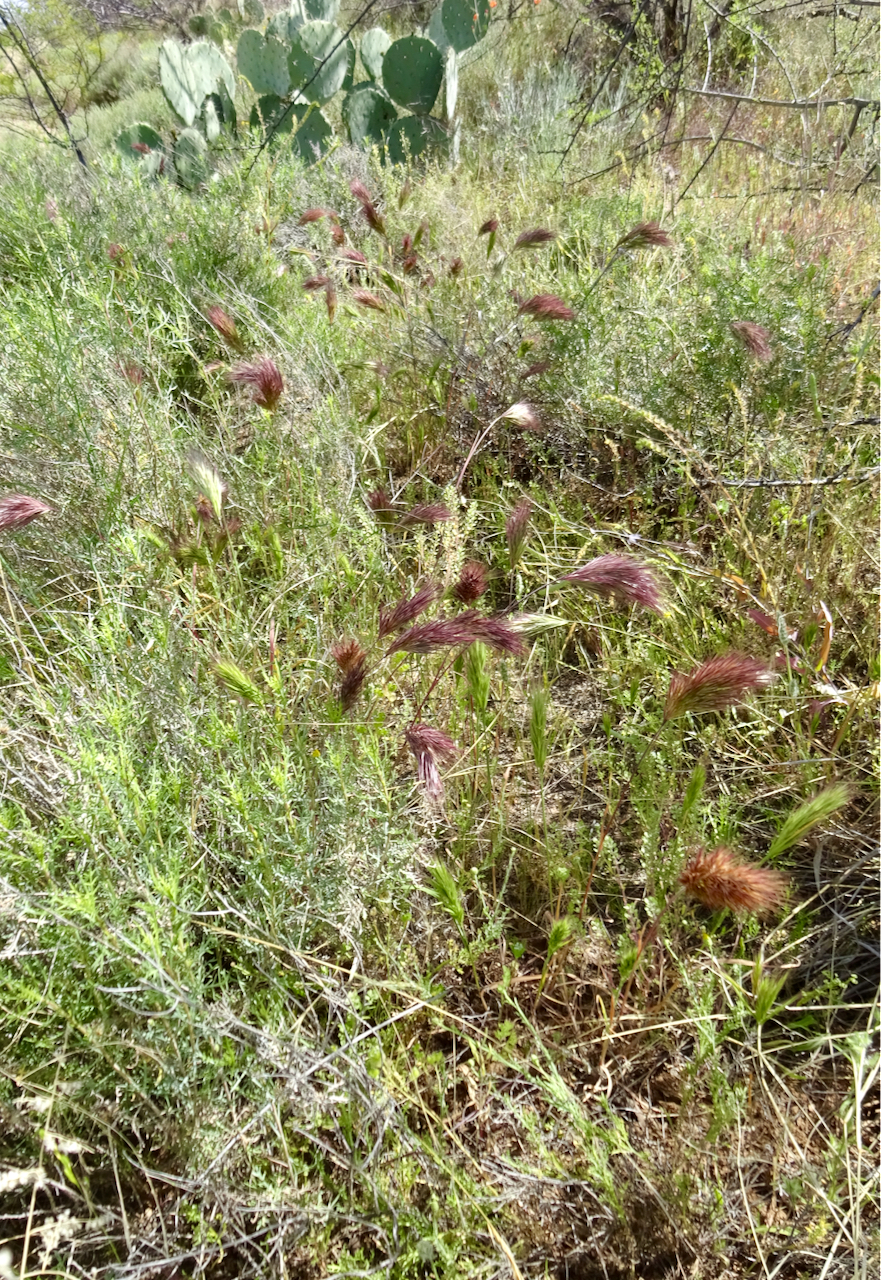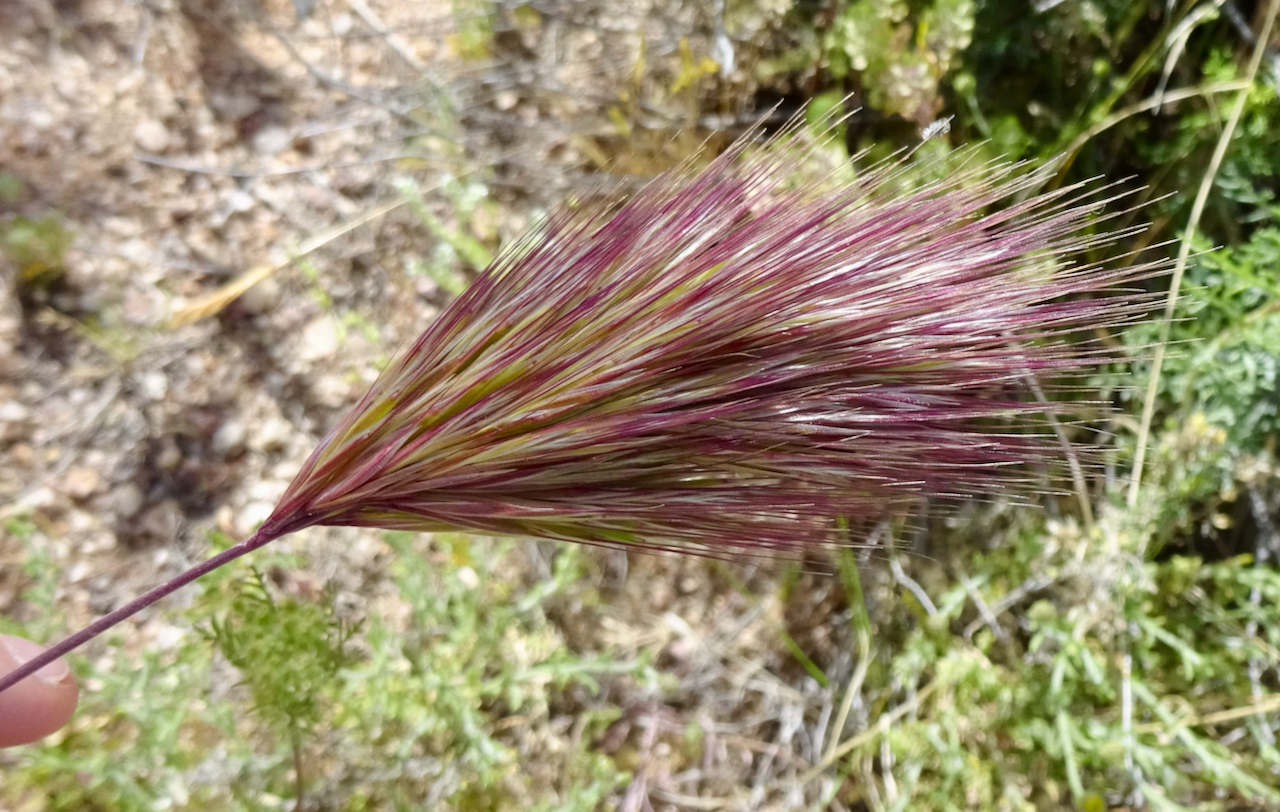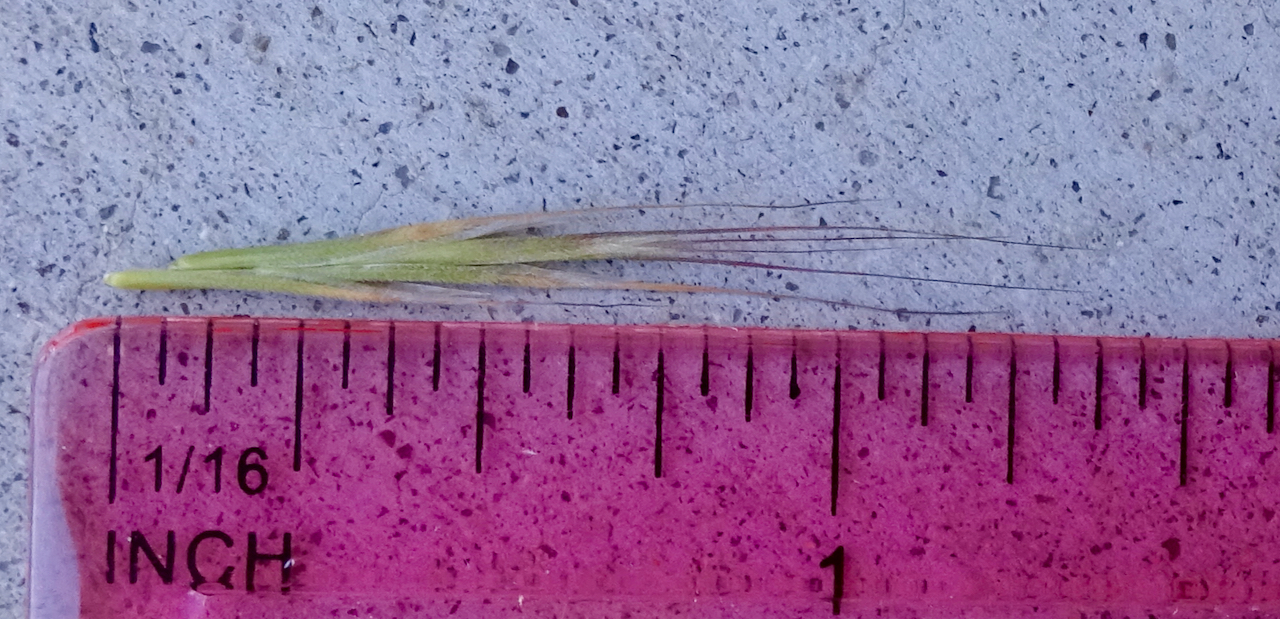Red Brome
Bromus rubens
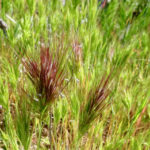
This is an INVASIVE PLANT!
Red brome is an annual grass native to southern and southwestern Europe. As early as 1870 it was abundant in California's overgrazed rangelands. Now it occurs throughout the western U.S., from Washington south to California, east to Arizona, Utah, and Texas. It can be found along roadsides, in waste places, on disturbed ground, and in cultivated fields.
Red brome seeds usually germinate in fall, requiring less rainfall than most native plants. The new plants are usually producing seeds by March, as the leaves are starting to die back. The dead stems and leaves of red brome decay slowly and can enhance the potential for the start and spread of fires. Red brome can compete with native plants.
Red brome is difficult to identify until seed heads are produced. To control the spread of this plant, pull it out by the roots (usually easy to do) and discard in the trash. Do not leave it lying on the ground. Less than 2% of seeds maintain their viability for more than a year, so removal of plants before seeds are released for 2-3 years, together with checking previously infested areas each year, can yield good control. Dry winters will reduce germination. Reseeding with native plants after red brome plants are removed can provide competition in future years
Notes:
- Bromus madritensis subsp. rubens is sometimes given as the scientific name for this plant.
- The awns and seeds can cause injury to animals, both wild and domesticated.
More Informatio
Academy Village BOLO on red brome
Map of distribution in US (as Bromus madritensis; light blue indicates not native)
Field Guide for Managing Red Brome in the Southwest from USDA Forest Service
Bromus rubens information from Global Invasive Species Database
Technical botanical description from SEINet
